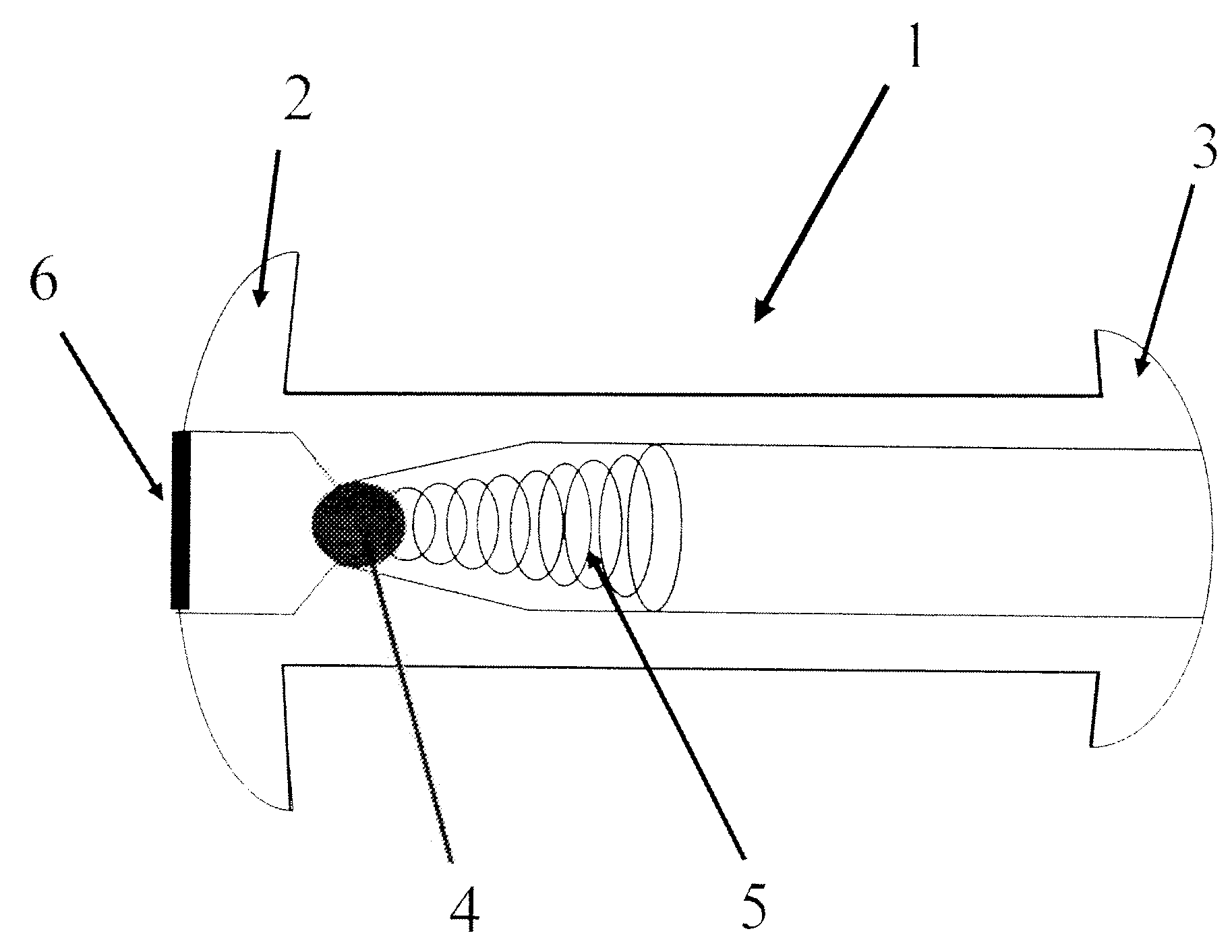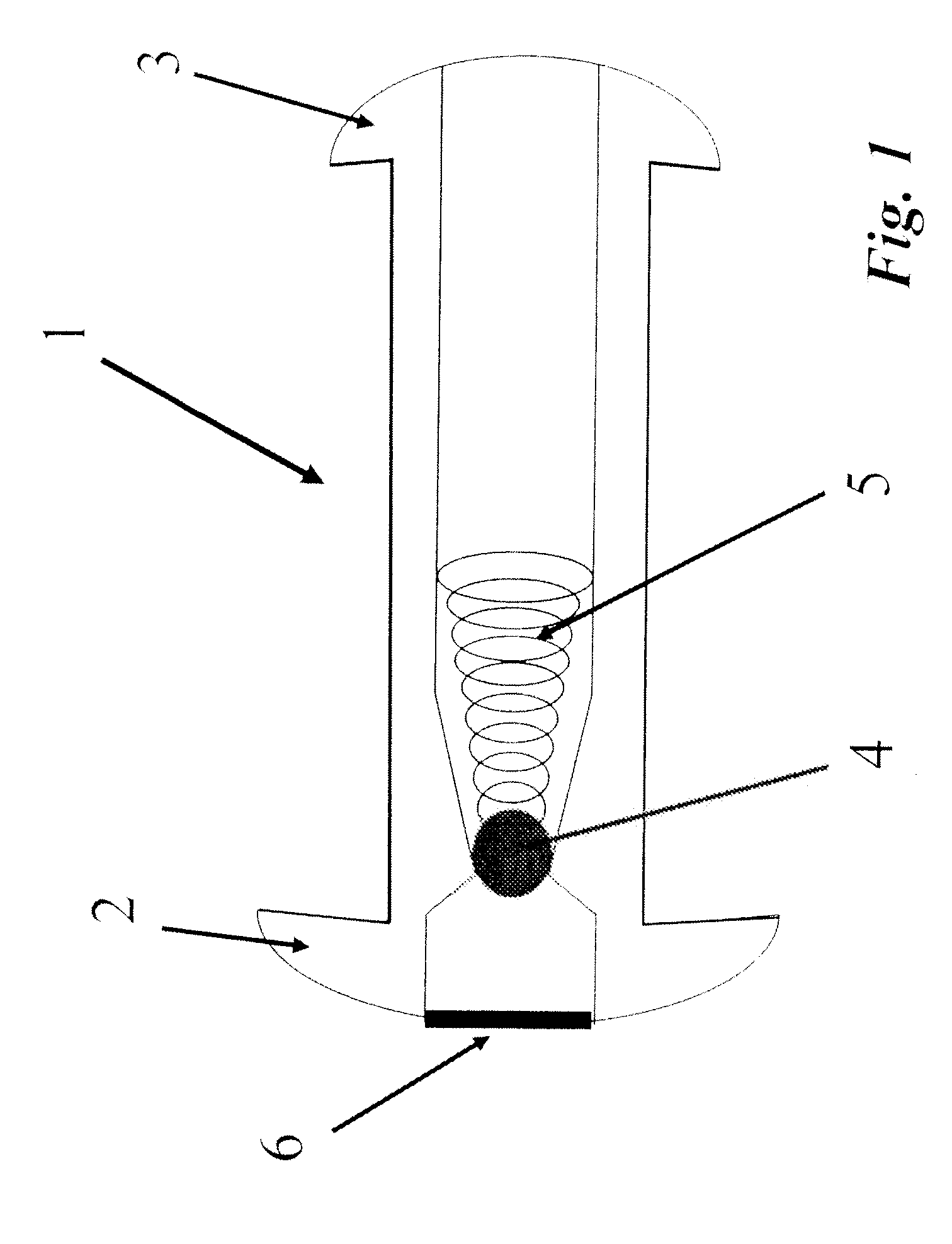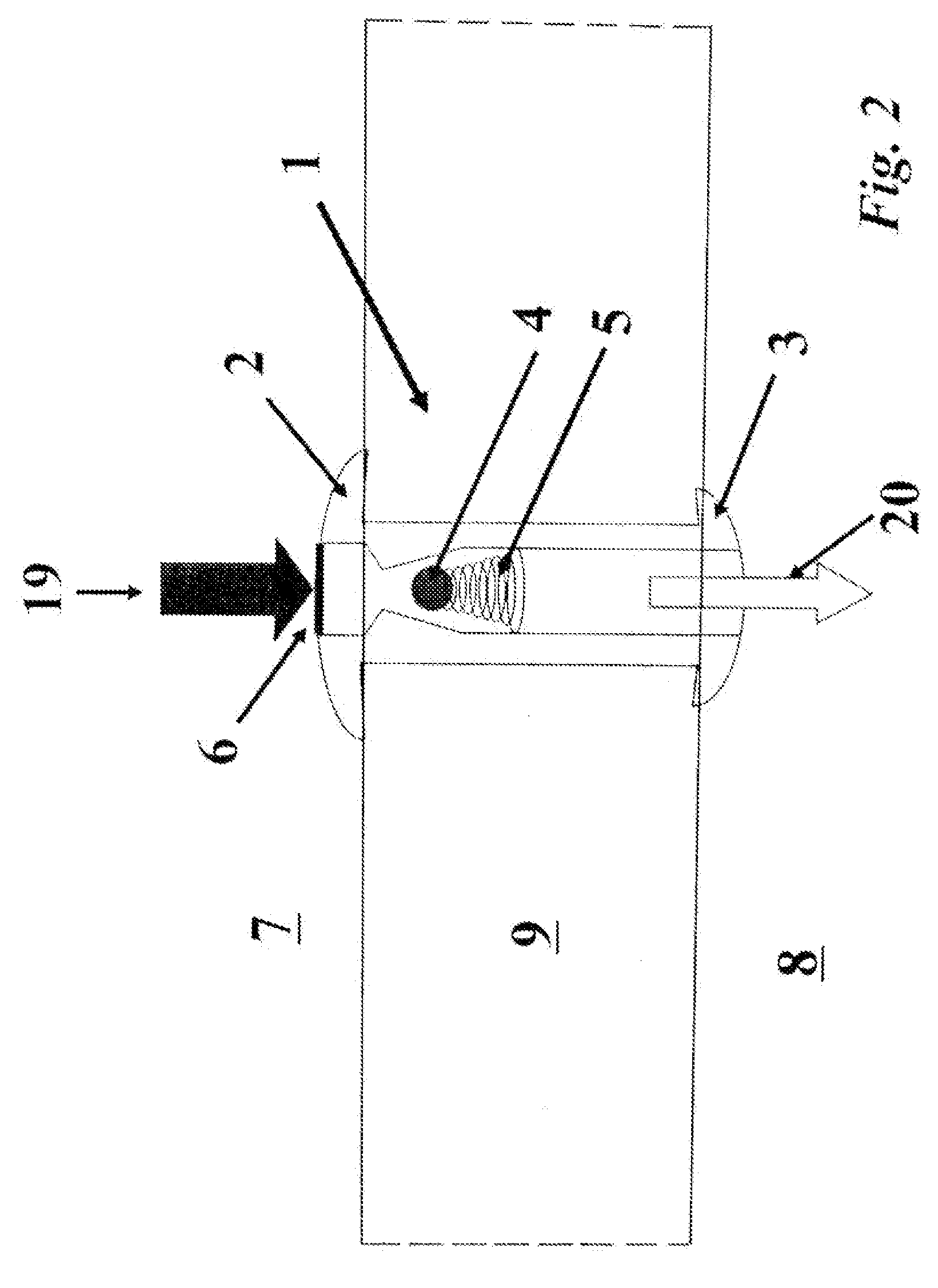Vesicular shunt for the drainage of excess fluid
a technology of vesicular shunt and drainage device, which is applied in the direction of intravenous device, blood vessel, medical science, etc., can solve the problems of increased morbidity and mortality, increased risk of infection, and frequent clogging of devices, so as to prevent urine reflux and increase the risk of infection
- Summary
- Abstract
- Description
- Claims
- Application Information
AI Technical Summary
Benefits of technology
Problems solved by technology
Method used
Image
Examples
Embodiment Construction
[0023]As can be seen in FIG. 1, a first embodiment of the present invention provides a novel vesicular drain 1 for implantation in the bladder wall 9, allowing unidirectional drainage of fluid into the bladder. The drain 1 includes two flanges at its ends 2, 3, which provide for the device to be firmly anchored once placed across the bladder wall 9. Alternative embodiments of the device may use other anchoring mechanisms, including, but not limited to: a screw thread on the outside of 1, staples, sutures, an adhesive compound, and / or one or more barbs.
[0024]The hollow shaft of the device contains a ball-valve 4 through which a positive closing pressure is provided by an attached spring 5.
[0025]The fluid collection interface of the device 1 may optionally include a large pore mesh 6 to allow for free flow of fluid while preventing incarceration of tissues at the drainage site.
[0026]As can be seen in FIG. 2, once the pressure of the fluid collection (in this case the peritoneal cavity...
PUM
 Login to View More
Login to View More Abstract
Description
Claims
Application Information
 Login to View More
Login to View More - R&D
- Intellectual Property
- Life Sciences
- Materials
- Tech Scout
- Unparalleled Data Quality
- Higher Quality Content
- 60% Fewer Hallucinations
Browse by: Latest US Patents, China's latest patents, Technical Efficacy Thesaurus, Application Domain, Technology Topic, Popular Technical Reports.
© 2025 PatSnap. All rights reserved.Legal|Privacy policy|Modern Slavery Act Transparency Statement|Sitemap|About US| Contact US: help@patsnap.com



